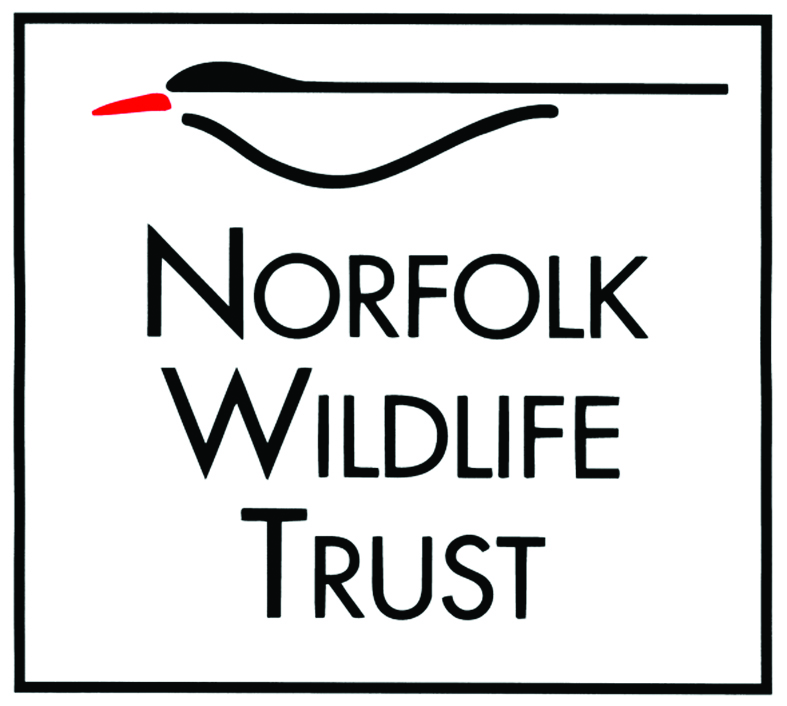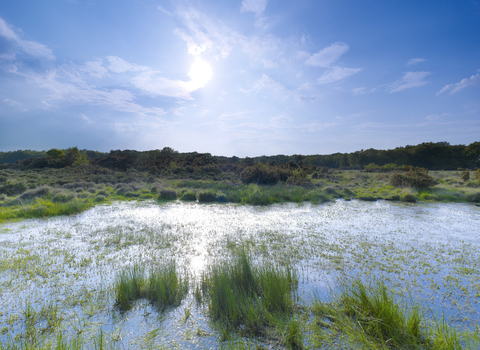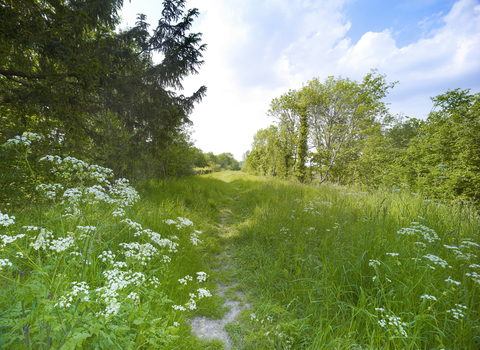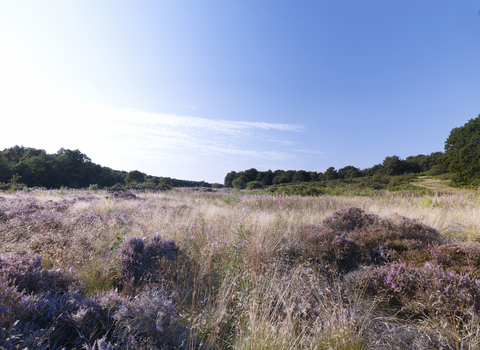Please note: The car park will be closed Wednesday 23 March - Friday 25 March inclusive, as we carry out some repairs.
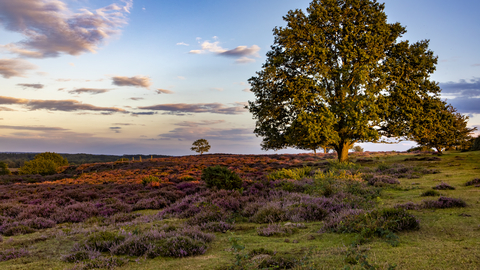
Roydon Common - Ian Ward
Roydon Common and Tony Hallatt Memorial Reserve
Location
Entrance via the two car parks on the Rising Lodge to Grimston road at map references: TF 681 230 and TF 698 229
OS Map Reference
TF 680 229View on What3Words
Know before you go
Dogs
When to visit
Opening times
Dawn till dusk, every day, all year roundBest time to visit
All year roundAbout the reserve
Nature-lovers rarely visit Roydon Common just once. It is a glorious relic of the vast heaths, bogs, and commons that once strung themselves across Norfolk.
You’ll find several very special habitats sitting side-by-side: heathland, acid bog, wet carr woodland, and grassland. This makes the reserve one of the very best in East Anglia, and a major draw for anyone with an interest in natural history.
The two adjacent reserves of Roydon Common and the Tony Hallatt Memorial Reserve form part of the NWT Gaywood Valley Living Landscape. We’ve expanded the sites, adding the Delft, Rising Breck and Grimston Warren in recent years. Grimston Warren was once a plantation, but our removal of the commercial pine trees and restoration of the heathland has been a resounding success. Woodlark and nightjars now regularly breed here.
An exceptional number of scarce invertebrate species thrive on Roydon Common, largely thanks to the intensive conservation work carried out to maintain and improve the site. Home to many species of dragonfly, including the black darter – for which this is one of only two breeding sites in Norfolk. More than 30 species of butterflies and over 450 species of moth have been recorded. The reserve is also home to the impressive minotaur beetle.
The list of rare, unusual and astonishing plants on the reserve is staggering, but perhaps the greatest floral spectacle occurs in August and early September when the site’s impressive stands of heather are in flower.
It's a great place for birdwatching – redshank and snipe breed in the boggy areas of the reserve, and Eurasian curlew can be found here too. In winter, hen harrier and merlin are not uncommon and can often be seen in the late afternoon coming into roost.
Roydon Common is home to two UK species of sundew, and it is worth looking out for these fascinating insectivorous plants. They can only extract a limited amount of nutrients from the acidic conditions they live in, so supplement their needs by catching and digesting small insects, which they lure with the sticky, sweet-smelling droplets on the end of their hair-covered leaves.
Habitat
Contact us
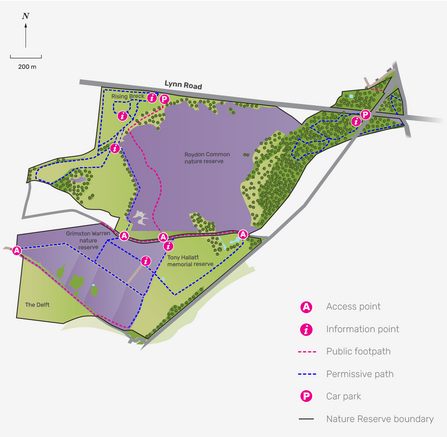
Seasonal highlights
All year round
An astonishing community of plants and animals can be found among the reserve’s diverse habitats, and it hosts species of national importance and rarity. Woodlark, tree pipit and nightjar breed on the reserve.
Summer
Plants: late summer is the best time to see the spectacular sight of carpets of heather in purple bloom.
Winter
Birds: hen harrier, short-eared owl, occasionally great grey shrike.
